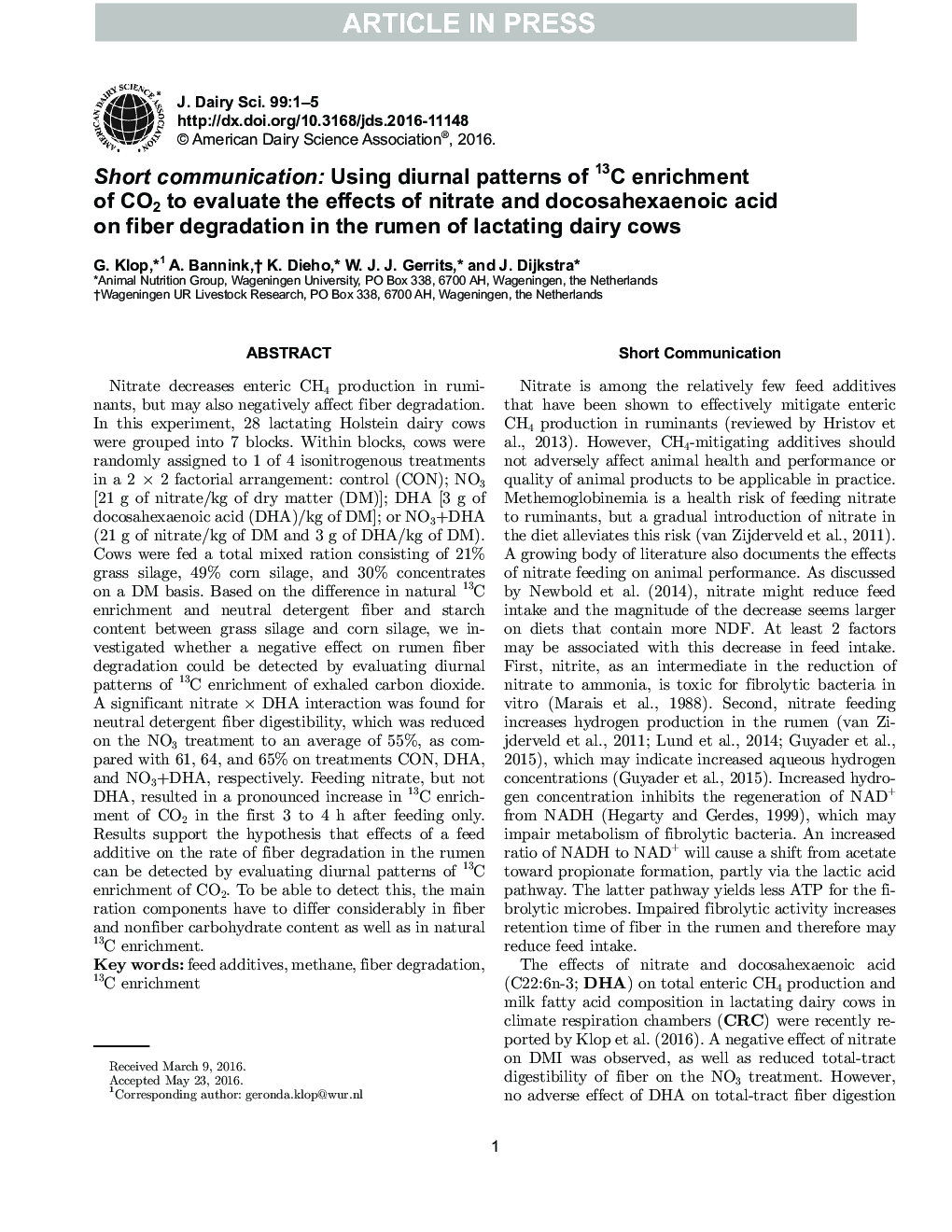| Article ID | Journal | Published Year | Pages | File Type |
|---|---|---|---|---|
| 5542830 | Journal of Dairy Science | 2016 | 5 Pages |
Abstract
Nitrate decreases enteric CH4 production in ruminants, but may also negatively affect fiber degradation. In this experiment, 28 lactating Holstein dairy cows were grouped into 7 blocks. Within blocks, cows were randomly assigned to 1 of 4 isonitrogenous treatments in a 2 Ã 2 factorial arrangement: control (CON); NO3 [21 g of nitrate/kg of dry matter (DM)]; DHA [3 g of docosahexaenoic acid (DHA)/kg of DM]; or NO3+DHA (21 g of nitrate/kg of DM and 3 g of DHA/kg of DM). Cows were fed a total mixed ration consisting of 21% grass silage, 49% corn silage, and 30% concentrates on a DM basis. Based on the difference in natural 13C enrichment and neutral detergent fiber and starch content between grass silage and corn silage, we investigated whether a negative effect on rumen fiber degradation could be detected by evaluating diurnal patterns of 13C enrichment of exhaled carbon dioxide. A significant nitrate à DHA interaction was found for neutral detergent fiber digestibility, which was reduced on the NO3 treatment to an average of 55%, as compared with 61, 64, and 65% on treatments CON, DHA, and NO3+DHA, respectively. Feeding nitrate, but not DHA, resulted in a pronounced increase in 13C enrichment of CO2 in the first 3 to 4 h after feeding only. Results support the hypothesis that effects of a feed additive on the rate of fiber degradation in the rumen can be detected by evaluating diurnal patterns of 13C enrichment of CO2. To be able to detect this, the main ration components have to differ considerably in fiber and nonfiber carbohydrate content as well as in natural 13C enrichment.
Related Topics
Life Sciences
Agricultural and Biological Sciences
Animal Science and Zoology
Authors
G. Klop, A. Bannink, K. Dieho, W.J.J. Gerrits, J. Dijkstra,
